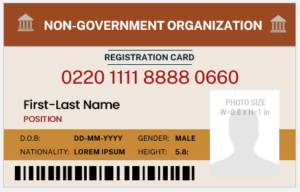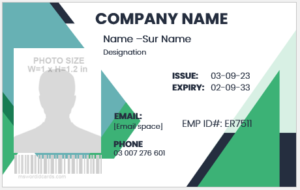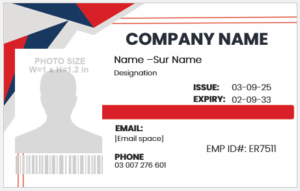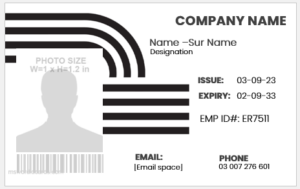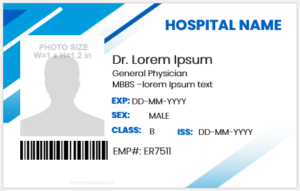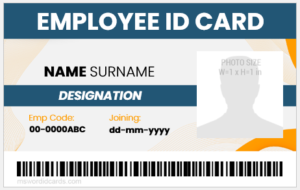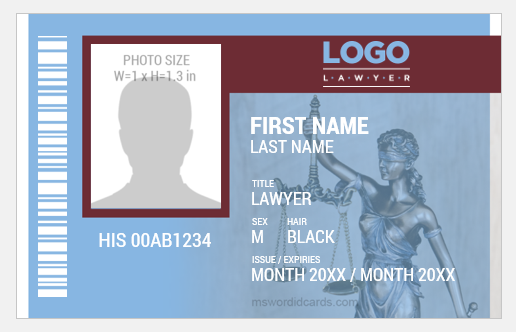Fake Editable Nursing ID Badge Templates
When people visit a hospital, it is important that they can identify the hospital staff instantly so that they can access them without confusion. One thing used for identification is an ID badge. In some states, according to state law, it is mandatory for doctors and nurses to wear an ID badge.
The law is very specific about the size and font used and even makes it mandatory to update the picture on the ID badge every few years. Often, a generic template is made by the hospital, and it is updated as and when required.
Nursing ID badges should have the following entries:
Organization information such as:
- The hospital’s or clinic’s name and logo should be written on the top in a bigger font so that the bearer of the ID badge works at this institution.
- The telephone number and Email address of the hospital or clinic should be mentioned after its name.
Personal information such as:
- The name of the nurse would be written next. The font size should be such that the person looking at the badge can read the name without difficulty. In the case of a generic template, there should be a blank space left here, which is then filled as required.
- A picture of the card-bearer would be placed next to their name. The picture should be clear, current, and of passport size, unless specified otherwise by state law.
- After the name, some basic information that can be used for identification would be mentioned. It may include gender, age, and some identification marks. Again, in the case of a generic template, these fields would be left blank to be filled out according to the person to whom the ID badge is being issued.
Job description:
- After this, there is a field for the job description; for example, the ID badge of a nurse trained in emergency services would have ER mentioned in this space. Similarly, a surgical nurse would have her specialty mentioned. This not only facilitates patients and doctors but also helps the security staff control employee movement to sensitive areas like patients’ record rooms and laboratories.
Formal information:
- The issue date and expiration date of the ID badge would be written next, as they enable security staff to ensure that this is a person who is currently serving in the facility and not some old employee.
- Employee signatures are added after this.
- A bar code or QR code is added at the end to enable the nurse to access different parts of the hospital according to their clearance level.
Common uses of fake ID cards:
- ID badges can be used as access cards for employee parking.
- They can be used as access cards for secured entryways.
- ID badges are also at times color coded so that just by looking at the badges, the security personnel can identify which person is allowed in which portion of the hospital.
- Besides the ease of recognition, another advantage of using ID badges is that if a patient has a bad experience and they want to report a healthcare professional, they know the name and designation, and the fear of accountability keeps the healthcare professionals alert and on their best behavior.
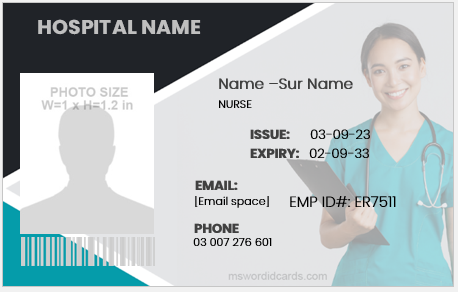

Horizontal Card: 2.0 MB
Size: Dimensions: 3.38″ x 2.13″
Vertical Card: 2.0 MB
Size: Dimensions: 2.13″ x 3.38″


Horizontal Card: 2.0 MB
Size: Dimensions: 3.38″ x 2.13″
Vertical Card: 2.0 MB
Size: Dimensions: 2.13″ x 3.38″
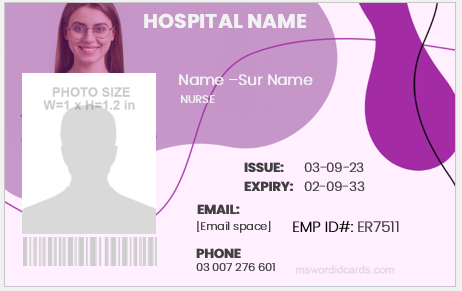

Horizontal Card: 2.0 MB
Size: Dimensions: 3.38″ x 2.13″
Vertical Card: 2.0 MB
Size: Dimensions: 2.13″ x 3.38″
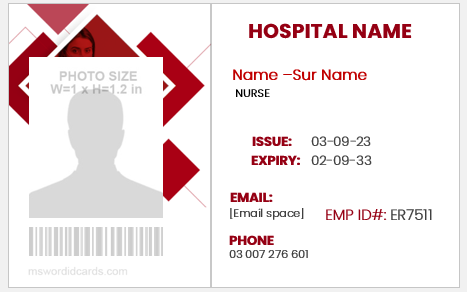
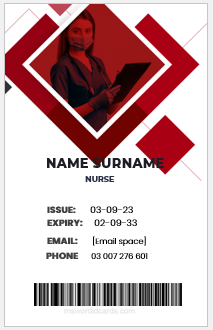
Horizontal Card: 2.0 MB
Size: Dimensions: 3.38″ x 2.13″
Vertical Card: 2.0 MB
Size: Dimensions: 2.13″ x 3.38″
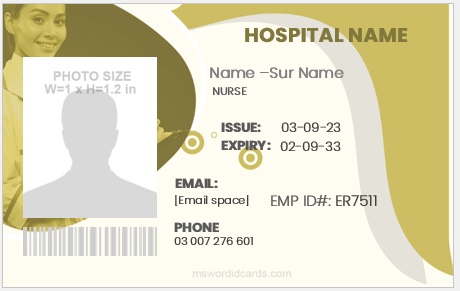
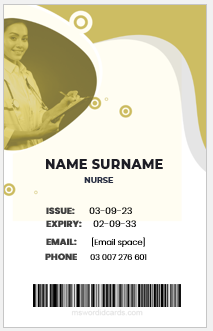
Horizontal Card: 2.0 MB
Size: Dimensions: 3.38″ x 2.13″
Vertical Card: 2.0 MB
Size: Dimensions: 2.13″ x 3.38″
View all templates –>

Dimensions: 3.38′′ x 2.13′′
Size: 2 KB
← Previous Article
Cartographer ID BadgesNext Article →
Fake Driver License ID Cards